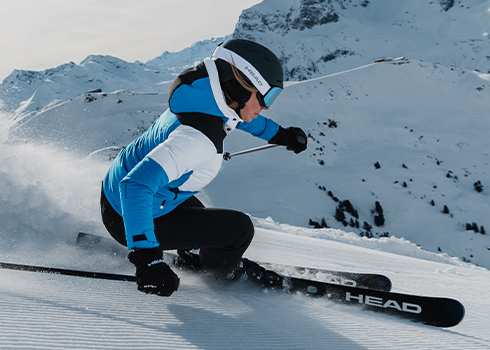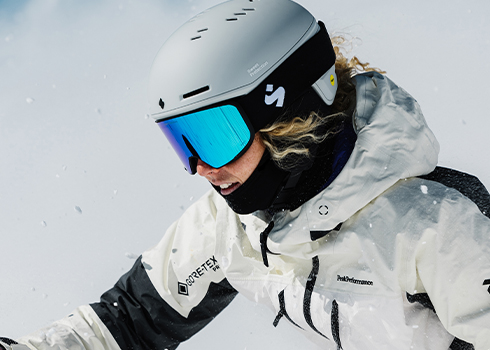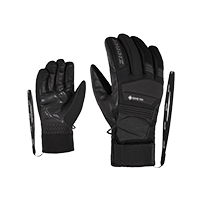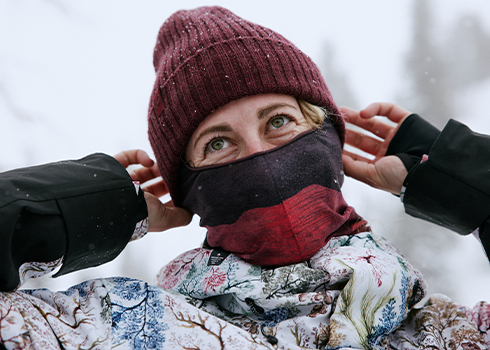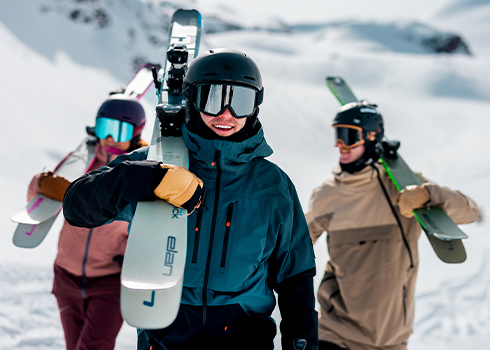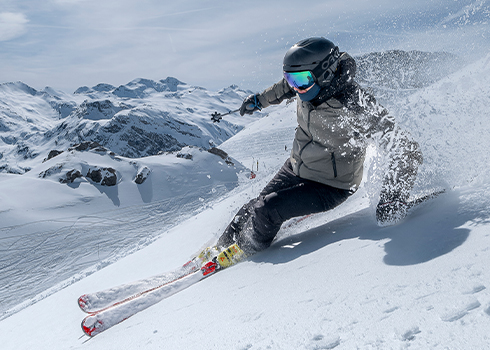A technical ski jacket
In our webshop you can find various types of ski jackets. However, we understand how hard it might be for you to decide which type of jacket you need. How should you know which jacket will work the best in which weather conditions? What are the advantages and disadvantages of each type of jacket and what do different ski terms stand for?
Almost all ski jackets in our assortment are breathable and waterproof. Breathability means that the jacket can let the heat generated by your movements escape, so you stay dry. Water column is an indicator that is used to show how waterproof a jacket is. The higher the water column, the more waterproof a jacket is.
Insulated ski jacket:
Insulated ski jacket provides basically all the functions that you need for skiing. This type of jacket is warm and has a number of practical functions. These functions will be different for each jacket or brand, but most of insulated ski jackets have a snow catcher, hood, adjustable cuffs, zippered pockets, a ski pass pocket and ventilation zippers or openings.
With an insulated ski jacket you are ready to go skiing. You don't need to combine it with an extra insulating layer, unless you are travelling to extremely cold destinations. Moreover, you can wear an insulated ski jacket all winter long, not only while skiing.
One of the disadvantages of insulated ski jackets is that you cannot easily regulate the heat yourself. The ski jacket is as it is and you can take it off or unzip it when you're too warm. Would you like to be able to regulate the warmth of your ski outfit yourself? Then you need to create your ski outfit from different layers. In the following video you can find more information about 3-layer system:
You can create your ski outfit by combining the following types of jackets:
Hardshell ski jacket:
A hardshell ski jacket is not insulated, because it is meant to be worn as an outer layer. This type of jacket is waterproof and windproof and you can compare it with a rain jacket. However, there is one very important difference. A hardshell ski jacket has very high breathability, because of a special membrane. There are various types of membranes, maybe you have heard of GoreTex? The membrane is made of millions of miniscule holes. They are so small that water drops cannot pass through. This means that no water or snow can get through the jacket. However, the water vapor droplets, which are produced by your body heat, are much smaller and therefore can pass through the membrane, keeping you dry. What is more, most of the hardshell ski jackets have taped seams and taped zippers, making you optimally protected against all external conditions.
A hardshell ski jacket is windproof and therefore you do not get cold very fast, but it is not insulated. To create an insulating layer combine a hardshell jacket with a midlayer or down jacket. The significant advantage of such a solution is the ability of taking off the additional jacket if you get too warm. In this way you can wear the jacket whole year round, adjusting the layers to weather conditions.
Softshell ski jacket:
A softshell jacket, just like a hardshell jacket, is an outer layer. Softshell jackets are usually not insulated, but they have a layer of fleece, which makes it warmer than a hardshell jacket. A softshell jacket ensures warmth when you keep moving. At times when you do not move much, you also need to wear an insulating layer under your softshell jacket. Moreover, a softshell jacket is made of soft and stretchy material, so you can enjoy freedom of movement. A softshell ski jacket compared to a hardshell ski jacket is slightly less water-repellent, but because of the stretchable material it is ideal for various outdoor activities.
Thanks to the fleece layer on the inside you can also use a softshell ski jacket without insulation underneath and because it is not insulated you can wear it whole year round. You can also use it as a windstopper.
Midlayer (down) jacket:
A midlayer or down jacket should not be mistaken with a down insulated jacket, as this type of jacket is meant to be worn under a hardshell or softshell jacket. If it is really cold, then a hardshell or softshell jacket is not enough and then you can combine it with a warm midlayer jacket.
A midlayer down jacket can be worn on its own on dry days, because it doesn't provide enough waterproof protection. A midlayer jacket often includes a small bag, to put the jacket in it. This makes it easy to put it in your backpack and take with you.
Summary:
By working with different layers, you can adapt your ski outfit to any weather conditions. In addition, you can endlessly combne the layers to create a new look every time.
Information videos:
Would you like more information about our different types of ski jackets? Then check out our videos for more explanation:




